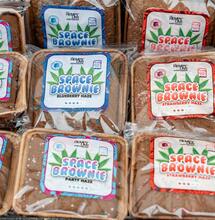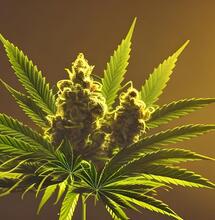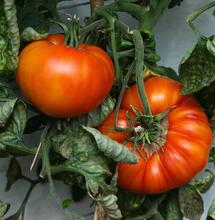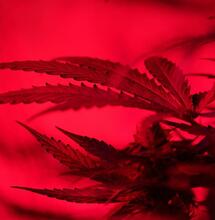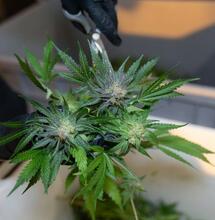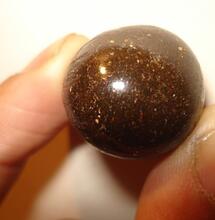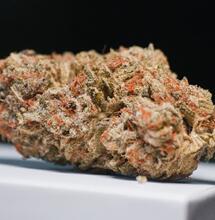All About Cannabis Landrace Strains
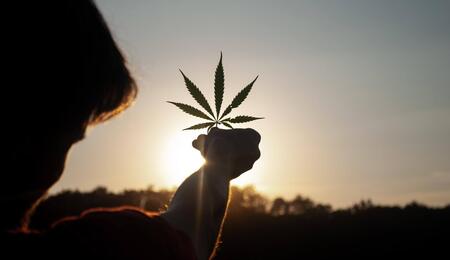
Cannabis landrace strains are the original cannabis plants that grew into nature. Breeders have used landraces to create new cultivars, something which has transformed cannabis culture and paved the way for the modern market. Consuming cannabis in the 1960s and 1970s in most cases meant smoking "pure" weed coming from landrace plants. While these plants contain less THC, they are vigorous, very adaptive to the terrain native to them, and prone to yield heavy fruits.
Sativa cannabis plants are known for their taller stems, narrower leaves and lighter flowers. On the other hand, Indica plants are known for their dense short grow, broader leaves and tighter flowers. Both types carry these genetic traits from cultivars native to specific regions in the world. Sativas are native to the Indian subcontinent. Indicas, an early source of hash, are native to the arid mountains of Afghanistan and Pakistan. These native types of cultivars are called landrace cannabis strains. Some of them are legendary; their seeds were used by breeders to create new and more potent strains. Landraces are in the genetic lineage in all the weeds we smoke today. And while it might be rare to come across an original landrace flower, it's not mission impossible.
Why Are Cannabis Landrace Strains Special?
Landraces are pure cannabis, the oldest types that have naturally grown in the wilderness, and have evolved over the course of many centuries. Landrace cultivars contain a more diverse profile of cannabinoids and terpenes, and the plants are known to give bigger yields. They are found all over the world, although notably most are traced to Asia. Most landraces are Sativas or hemp varieties with minimal THC, while Indica landraces are exclusive to regions in Asia. In addition, there are ruderalis landrace strains that are native to Central Asia and North Africa.
Each landrace strain is genuine to a particular geographic region. Each strain is perfectly adapted to their original local environment or the "terroir." All modern strains have been derived from landraces and that's why landraces are so treasured. They are the foundation for breeding. Breeders have used them to create novel strains, including probably the favorite strains you've enjoyed all along.
What Happened to Landraces?
During the 1970s, people started to knowingly breed different landrace strains together. This is how the first novel strains came out. The new varieties tried to preserve the most coveted traits from the mother strain. The process also attempted to remove undesired characteristics that affected the plant's strength or potency. As interactions between different cannabis landrace strains continued, it meant that breeders actually produced hybrids. Those hybrids led to the creation of any and all commercial strains available for purchase today.
When the first cannabis companies began breeding commercial strains back in the day, they did use landrace strains as the basis for breeding. Skunk#1 is one of the first real hybrids of the modern cannabis production; it's a cross from three different landraces: Afghani, Acapulco Gold and Colombian.
After all the crossing, today it's hard to find pure or landrace cannabis strains. It might even be a challenge to come across some of the first hybrids created with the landraces. Thus, instead of Skunk#1, it might be easier to find Lemon Skunk or Skunk-berry.
We still use the general tags, such as Indica, Sativa or hybrid. But what they most certainly indicate is the dominancy of the lineage.
Landraces and Heirlooms
If landrace is cannabis that grows in nature without any human intervention, heirloom is the cannabis grown from seeds picked from those original strains and cultivated elsewhere. When hippies explored Asia back in the day, they collected many seeds from the marijuana that they saw growing in the wild. The Hippie Trail was active between the mid-1950s and mid-1970s, and a lot of people who took the overland journey brought back seeds from countries such as Pakistan, India, Nepal and Thailand.
Bringing the seeds home in the U.S. and planting them away from their original locations, these seeds couldn't account for landrace anymore. However, their heirlooms succeeded in places with similar climate, such as California and Hawaii, eventually defining the local cannabis offer.
The Importance of Terroir
Terroir is how a specific region's climate, soil and other environment factors affect the quality and taste of the cultivar. Terroir is important not only for cannabis, but also for other grows, in particular wine. Some geographic regions are said to have more 'terroir' than others.
Landraces originate from countries such as India, Pakistan, Afghanistan and South Africa. In the evolutionary cycle, the environment specifics to the country's location passed authentic traits to each strain, including their composition, chemistry, resilience and yield.
Cannabis landrace plants remained isolated for centuries in the environments where they appeared. This means that they flawlessly adapted to those conditions, such as the local humidity, prolonged periods of heat, arid soil, available nutrients, etc. For a heirloom to thrive, it's much easier to plant it in a place that is environmentally similar to its native climate. Even in that case, it's not like planting the seed in the same terroir. Still, replicating the local environment for each cultivar, as much as possible, has always been important.
Changing the terroir has helped increase the potency of landrace varieties. A landrace strain grown in the original terroir where it adapted throughout a hundreds-year process would be less potent than heirlooms grown in a new terroir.

Are Landraces Easy to Find?
Only a few cannabis landrace strains can be found today. Perhaps a better idea, you can look for strains that are closely related to the originals. For example, Northern California has a cooler climate and therefore it was the optimal environment to try strains local to the Hindu Kush mountain region between Afghanistan and Pakistan.
Kush strains, which are widely praised for their tranquilizing and sedating effects, are probably the closest thing to a landrace strain available in this part of the world. Starting with OG Kush, any strain that contains 'kush' in its name has a genetic lineage with the Hindu Kush landrace strain.
Grown outside their original terroir, heirlooms of landraces can still be purchased. In general, they are cultivated at a smaller scale than most commercial strains, but they carry more or less the same genetics as landraces.
The change of terroir, or bringing the original seeds from Asia to the U.S., has altered the potency of these strains. Some heirlooms have also been additionally bred for higher potency. There are greater chances to find heirlooms rather than landraces anyway.
Famous Cannabis Landrace Strains
Below is a quick overview of some of the most iconic cannabis landrace strains. Although some of them are rare to see flowering, you never know where life takes you and what growers you meet. Someone just might have some of these gems in their garden.
Afghani
Afghani is a heavy Indica that carries the name of the geographic region where she comes from. This landrace strain is praised for its ultimate calming effect, and its dense buds are a well-known source of hash. Afghani only thrives in arid environments. It cannot succeed in wet, humid climates where its buds can easily catch mold. Its smell and taste is sweet and earthy.
Acapulco Gold
This cannabis landrace strain is native to North America and is in the genetic makeup of Skunk #1 as well as several other varieties, including haze strains. It's also called Mexican Sativa. It's an energizing and uplifting type of weed. Its buzz is clear and happy, and it smells like sandalwood. Rare to find it today, Acapulco Gold was a very popular strain during the 1960s counterculture movement.
Hindu Kush
Originating in the Hindu Kush mountains of Afghanistan, this landrace strain is the reason why people often use "kush" and "indica" as synonyms. Hindu Kush has given beloved 'kush' strains such as OG Kush and Bubba Kush. Like other cannabis landrace strains, it's rare to come across original Hindu Kush flowers today. Its effect is calming, facilitates pain relief and helps with nausea and stress. The smell and taste is earthy wooden, sligthly sweet.
Thai Stick
This is a pure landrace strain from Thailand. Thai Stick was introduced in the U.S. back in the 1970s and 1980s. The harvested material from Thai Stick is traditionally dried tied onto long sticks, therefore the name. Thai Stick growers of the day allegedly infused opiates in the plant material during the drying to increase the psychoactive effect. Strains such as Classic Haze, Juicy Fruit and Voodoo all have Thai Stick into their genetic lineage. It's difficult to cultivate this strain outside tropical climates. The varieties it has given must be cultivated in properly equipped rooms or greenhouses that mimic tropical environments. The effect of Thai Stick is a happy, energizing high. The smell and taste is fruity, citrus-like, yet very distinct.
Durban Poison
A landrace that carries the name of an African city; Durban is a port city in South Africa. Durban Poison is a landrace cannabis strain native to this corner of the world. It's a pure sativa, heavily coated with trichomes. The strain's prominent resin glands make it a super choice for extracting concentrates. Against all odds, pure forms of Durban Poison have recently appeared at various cup competitions, leaving no man dull. The buzz from Durban Poison is energetic and uplifting. It stimulates creativity and productivity; it smells sweet and spicy.
Lamb's Bread
This cannabis landrace strain was said to be Bob Marley's favorite. It's a very special sativa, and many people have used it as an antidepressant. The strain is also known as Lamb's Breath. Smoking is followed by an uplifting feeling, and it can also stimulate creativity, clarity of mind and contemplation. Lamb's Bread has a strong odor and a funky, grassy hint.
Also read on Soft Secrets:


